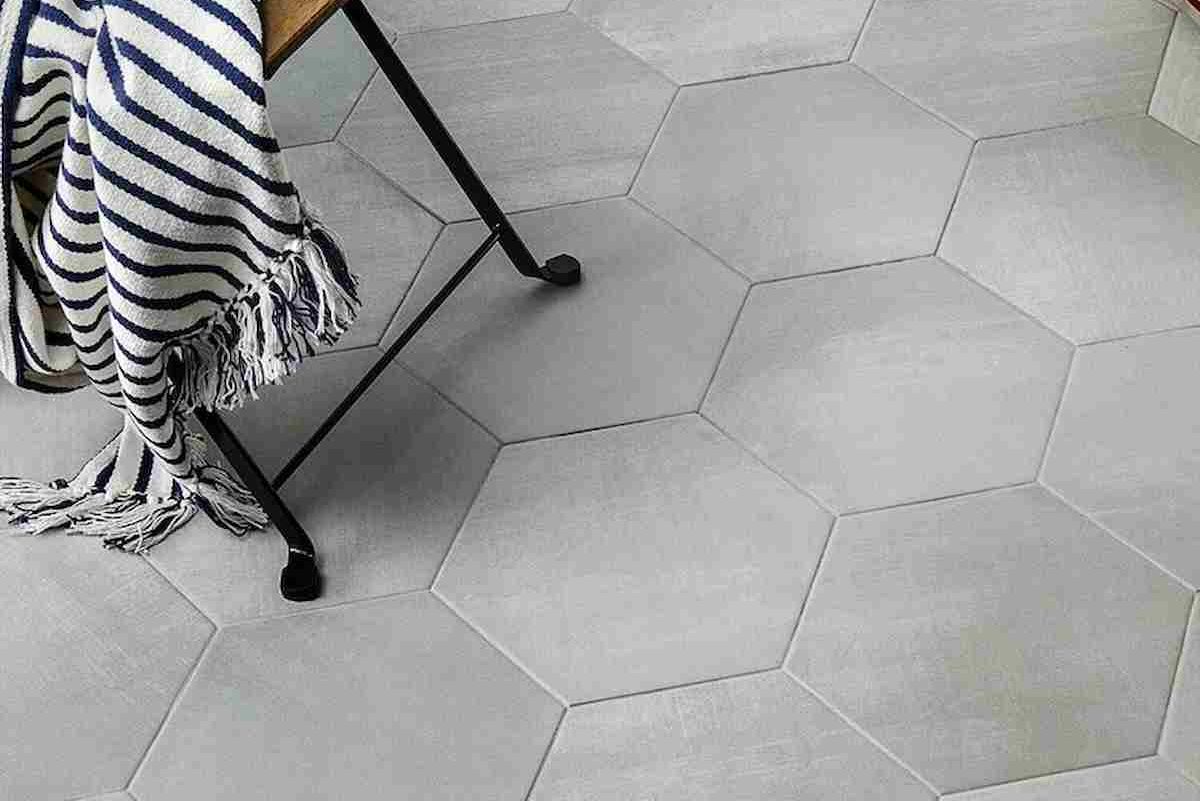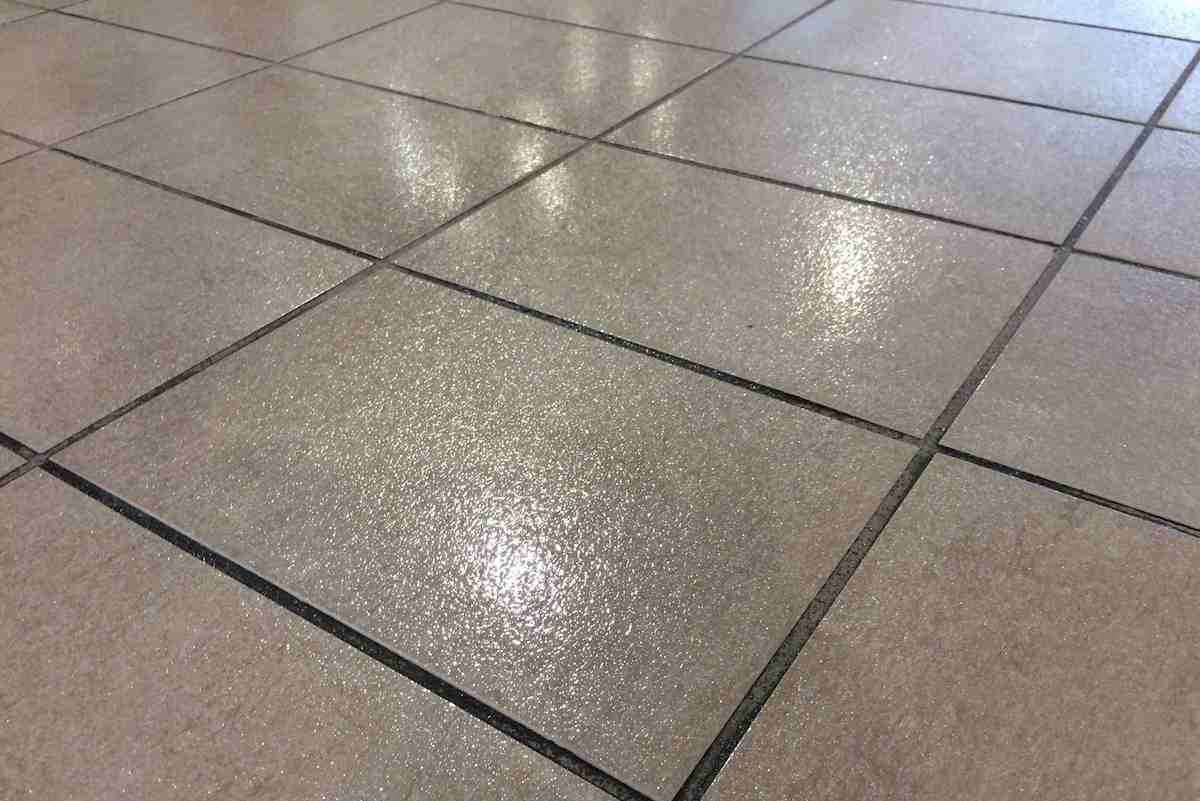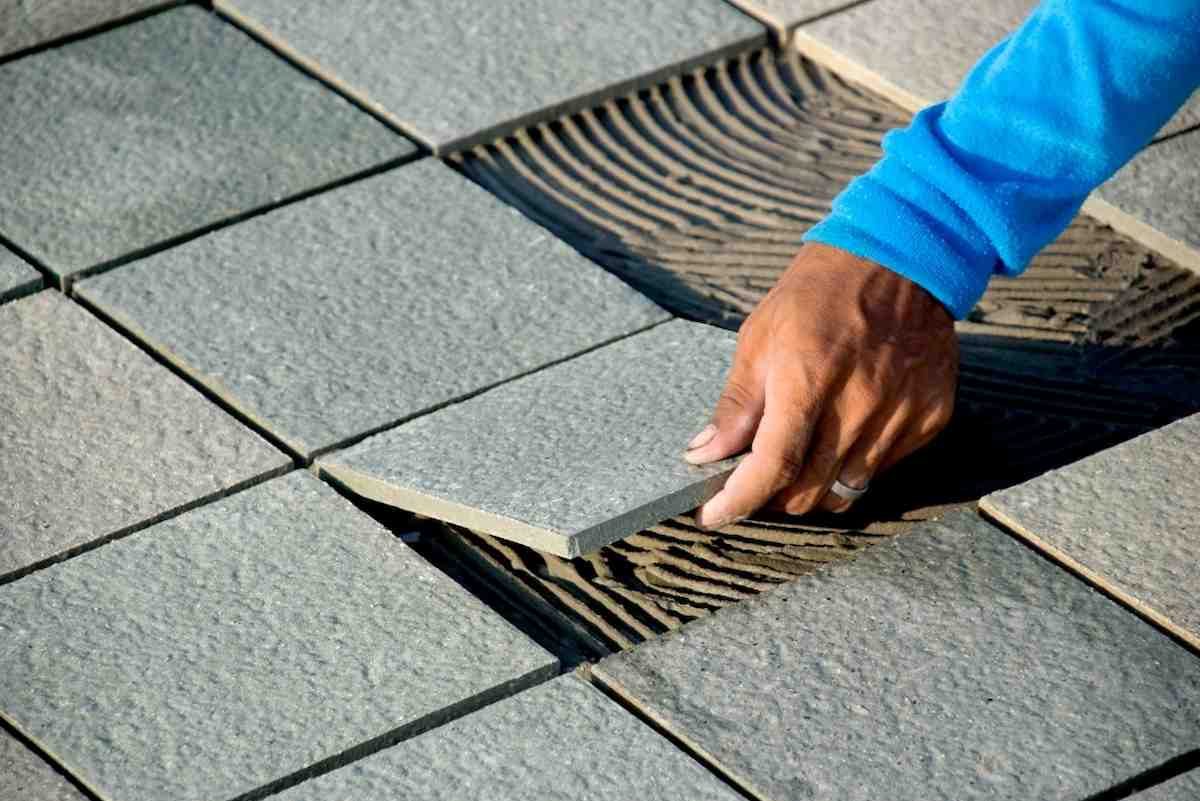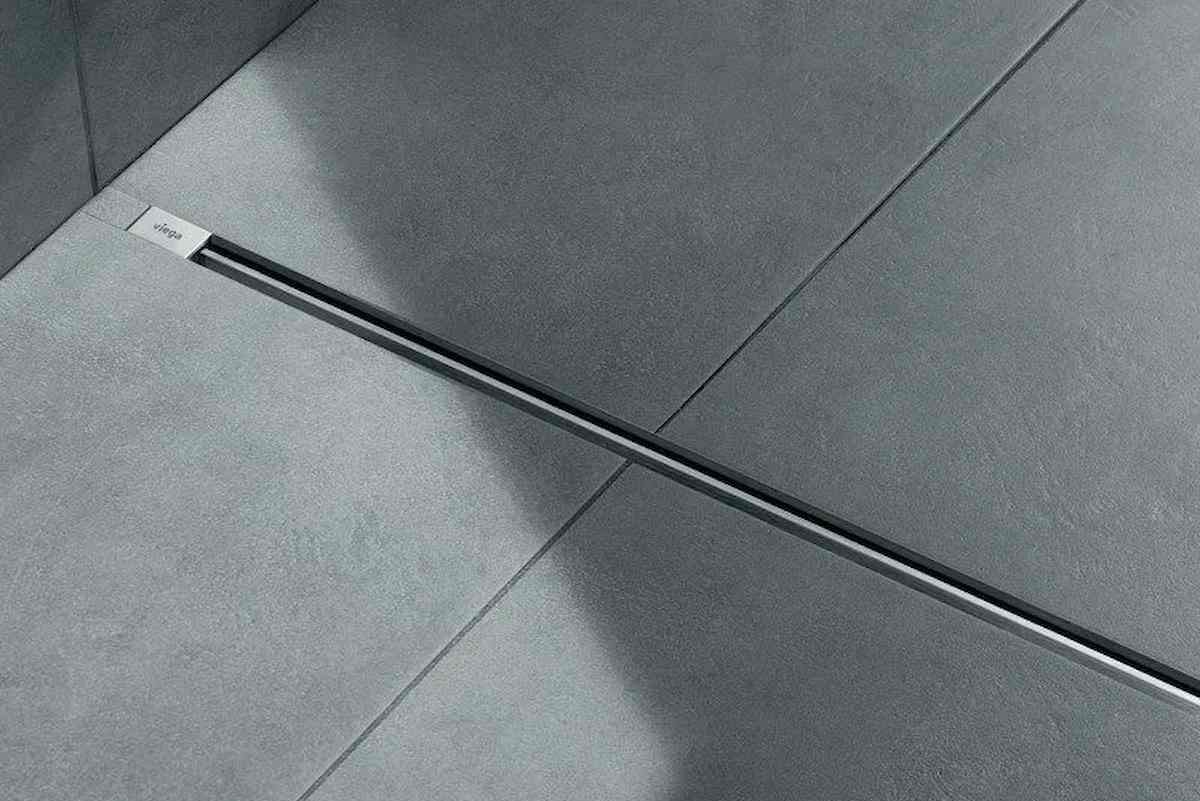One may choose non-slip tile for his/her floor, or make it non-slip with some ways. Some certain and effortless ones are presented in this essay.
If your home has tile floors, you are certainly well familiar with both their benefits and drawbacks. On the one hand, they better retain moisture than other types of flooring.
Tile flooring, on the other hand, can be very slick, especially when wet. All kinds of injuries, even serious ones, may result from this (I know from experience).
As a result, it’s always a good idea to make tile flooring safer by enhancing traction and lowering slipperiness.
The good news is that you can quickly and cheaply make tiles significantly safer without spending a bunch.
You essentially have 4 options if you want to make your tile floor less slippery:
To increase traction, make the tiles’ flat surface rougher (usually done by using an anti-slip solution)
Use stickers or treads to prevent slipping
Use non-slip carpets to cover the tile floors.
Change to anti-slip floor tiles (only advised if you’re contemplating a complete remodel)

Here are the most effective techniques for making slippery tiles safe:
- Make the tile floor less slick by applying an anti-slip solution.
There are many anti-slip products available on the market, including InvisaTread and Liquid Traction. All of them function by giving your tiles some texture, which results in less slick surfaces rather than smooth ones.
I tried and recommend this non-slip item, which is called Stone Grip.
Stone flooring, porcelain tiles, and ceramic tiles can all be treated with Stone Grip to prevent slipping. It functions by forming tiny treads on the surface, which improve traction and lessen slipping.
Although the company asserts that it doesn’t alter the color or appearance of the flooring (and it didn’t in my case), I advise testing a tiny patch before covering the entire surface.
It may be utilized both inside and outside, making it a fantastic option for pool areas as well.
My ceramic tiles are now substantially less slick thanks to Stone Grip, making them more safer. I don’t really have to worry about sliding or falling even if they become wet, and the effect seems to persist for a while.
Although you may literally use it on any indoor or outdoor ceramic, stone, or porcelain surface, I used it in the bathroom and kitchen. Even for professional and commercial uses are possible.
As a result, Stone Grip performed as I had anticipated, and I received very fantastic results. From my personal experience, these are a few of its advantages:
My tiles now have a very durable anti-slip coating,
significantly more traction,

makes the bathroom considerably safer overall,
was reasonably simple to utilize
The outcome is visually pleasing (I mean the treatment did not change the appearance of the floor),
Moreover, the entire process didn’t take me hours, but rather only approximately 30 to 40 minutes.
Since there was a discount at the time, I purchased my bottle from Amazon, but I believe you can also purchase one at your neighborhood hardware store. You may check the price here right now.
Here are the primary steps to utilizing Stone Grip to make your tile floor less slick:
I want to start by highlighting the value of planning. As a first step, you must clean your tiles with a pH-neutral or slightly acidic cleaner.
Lack of sufficient surface preparation increases the likelihood that the finished product won’t be completely satisfactory. Therefore, be sure to carefully read the bottle’s directions.
You’ll need a “neutralizer” for the procedure, which is really just a solution of clean water and baking soda. Before using Stone Grip, prepare it by adding one or two tablespoons of baking soda to each gallon of tap water in a bucket (you may also use a small tank sprayer).
Testing can begin if everything is ready. Select a small, discrete area. Apply a small amount of Stone Grip after making sure it is thoroughly clean and dry. With a rubber-soled shoe, check the slip resistance every 30 seconds.
Make care to record the time that has passed as well. You must rinse the test area with the neutralizer once you receive the desired result (often between 5 and 15 minutes; do not let the solution dry).
Now that you know how long to let the anti-slip solution sit on the tile floor before rinsing it with the neutralizer, you must repeat the previous process on the entire surface. However, this time, you don’t need to test the slide resistance.

These are the primary steps, then. I didn’t cover everything, so before using the solution, be sure to properly read and adhere to the manufacturer’s directions. This is essential for developing a durable anti-slip coating.
Additionally, be sure to use face protection, eye protection, and gloves that are resistant to chemicals throughout the operation. Put on skin-protective clothes. Never apply the solution to surfaces made of glass or metal.
It’s reassuring to know that the company guarantees that Stone Grip will enhance your tile floor’s coefficient of friction for at least two years, but based on the reviews I’ve read, the slip-resistant effect often lasts for approximately four to eight years.
I suggest this treatment kit if all you want to do is make your tiled shower or ceramic (or porcelain) bathtub less slippery (it’s less expensive and simpler to use).
If maintaining home safety is a high priority for you, see our extensive post filled with sound guidance and crucial home safety guidelines (along with a checklist you can download).
- Use Anti-Slip Treads: a Quick and Easy Technique
Non-slip treads (or stickers) are your greatest option if you’re looking for an affordable and straightforward way to make your slick flooring safer. They can be used on smooth indoor surfaces like staircases or bathroom ceramic tiles.
Apart from being inexpensive, anti-slip treads’ main benefit is that they effectively prevent slipping without changing the tile’s natural surface.
Because they are removeable, you can get rid of them without harming the surface if you change your mind and want to try something new.
However, because they are visible, they tend to be less enduring than non-slip treatments and they also slightly change the surface’s appearance.

While it’s true that anti-slip treads are widely accessible, many of them are subpar products that frequently peel off after only a few weeks or don’t adhere to the surface adequately.
A reputable producer, 3M offers a high-quality product at a competitive price. That is the ideal option for bathrooms.
- Use non-slip rugs to cover your tile.
Probably the quickest and simplest way to make your tile floor non-slip is to use non-slip rugs. Rugs are something I particularly enjoy since I believe they can both brighten up a space and make it cozier.
But when it comes to safety, not all rugs are made equal. Untied, loose rugs, as well as carpets with curled edges, can be dangerous and a trip hazard.
You need rugs with non-slip backing if you want to avoid falls and slides. Non-slip rugs are widely available in both physical stores and internet retailers.
If you wish to continue using your current rugs, putting non-slip rug cushions below them would greatly increase safety. If your rug has a special form, you can use scissors to cut the pad to size.
Instead of using a non-slip rug pad, you can design some criss-cross patterns using a hot glue gun on the back of the rug and then wait for it to cure if you enjoy doing DIY projects.
The dry glue will work well as a traction aid. You should test this technique on a small area first because not all types of rugs will respond to it.

Rugs can be used in conjunction with the anti-slip solution technique so that bigger areas can be left uncovered without concern for slips. Always make sure rugs are fastened to the floor if you use them to lessen your tiles’ slickness.
Using a safety mat, make your bathtub or shower slip-resistant.
Sometimes, bathtubs and shower floors can be very slick. They are significantly safer thanks to the non-slip treatment discussed above, but if you want something really straightforward, acquire a safety mat.
When used correctly, safety mats can effectively prevent slips in the shower and bathtub. However, they must be placed on clean, flat surfaces in order for their suction cups to adhere firmly to the surface of the shower or bathtub.
Check out this mat on Amazon if you want to make your bathtub or shower safer; it has many excellent ratings and is available in a variety of colors and sizes so you can find the one that best meets your requirements.
- Swap out worn-out tiles for non-slip ones.
I want to start off by saying that I wouldn’t change the floor tiles solely to make them less slippery. It only makes sense, in my opinion, if your tiles are old, broken, or if you no longer like them and are replacing them nonetheless.
While it is true that this method of keeping your floors safer is fairly expensive and time-consuming, it can produce some truly remarkable effects.
Additionally, if you select a high-quality product, you may practically enjoy safety for as long as you leave the tiles in place because they won’t actually wear off.
As you can see, even on a tight budget, you can simply make your slippery tile floor safe. Make careful to get non-slip rugs if you plan to utilize them.

As an alternative, you might use a hot glue gun to make your old rugs slip-resistant or add non-slip pads below them. The quickest and most straightforward approach to make your bathroom and kitchen tile floors less slippery is to use rugs that are securely fastened to the floor.
Use an anti-slip product, such as Stone Grip, if you don’t want any rugs on your tile flooring. Yes, it will take some time to prepare the surface and apply the solution, but in my experience, it is well worth the time and work given that it lasts for years.
Utilizing anti-slip treads on your smooth surfaces is an easier solution. They are reasonably priced and quick to install.
For the elderly in particular, these treads are crucial since they considerably improve the traction of smooth surfaces, successfully preventing abrupt falls and slides.
In order to benefit from an up-to-date list of stylish tiles with diverse colors and patterns, do not hesitate to press the con box. We will be glad to work with wholesalers and importers around the world.












Your comment submitted.